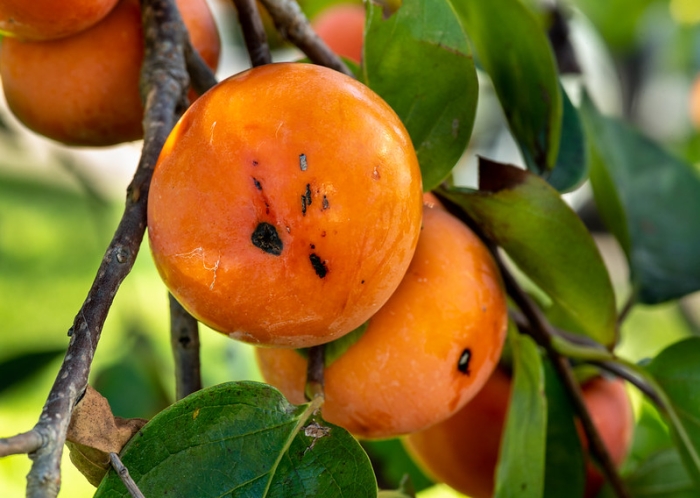American Persimmon
(Diospyros virginiana)
American Persimmon (Diospyros virginiana)
/
/

Puddin Tain
CC BY-SA 2.0













































































Estimated Native Range
Summary
The American Persimmon is valued for its edible fruit, which is used in desserts and traditional dishes in the U.S. South and Midwest. The fruit’s flavor can vary significantly, with some being palatable after frost and others remaining astringent. In cultivation, the tree is appreciated for its ornamental qualities, including its attractive bark and foliage, as well as its wildlife value, as the fruit is a food source for birds and mammals. It is used in urban and rural landscaping, and as a specimen tree in large gardens. The tree prefers full sun to part shade and requires medium amounts of water. It is relatively low-maintenance but can suffer from diseases such as leaf spot and canker. Some cultivars are known for producing consistently high-quality fruit.CC BY-SA 4.0
Plant Description
- Plant Type: Tree
- Height: 35-60 feet
- Width: 25-35 feet
- Growth Rate: Slow
- Flower Color: N/A
- Flowering Season: Spring
- Leaf Retention: Deciduous
Growth Requirements
- Sun: Full Sun, Part Shade
- Water: Medium
- Drainage: Fast, Medium, Slow
Common Uses
Bank Stabilization, Bee Garden, Bird Garden, Butterfly Garden, Deer Resistant, Drought Tolerant, Edible*Disclaimer: Easyscape's listed plant edibility is for informational use. Always verify the safety and proper identification of any plant before consumption., Erosion Control, Fire Resistant, Low Maintenance, Street Planting
Natural Habitat
Dry forests, open woodlands, and river bottoms
Other Names
Common Names: Common Persimmon , American Persimmon , Eastern Persimmon , Simmon , Possumwood , Persimone , Persimon , Possum Apple , Sugar Plum , Caqui De Virginia
Scientific Names: Diospyros virginiana , Diospyros virginiana var. pubescens , Diospyros virginiana var. virginiana , Diospyros lucida , Diospyros virginiana var. platycarpa , Diospyros virginiana f. pumila , Diospyros angustifolia , Diospyros mosieri , Diospyros virginiana f. atra , Diospyros calycina
GBIF Accepted Name: Diospyros virginiana L.